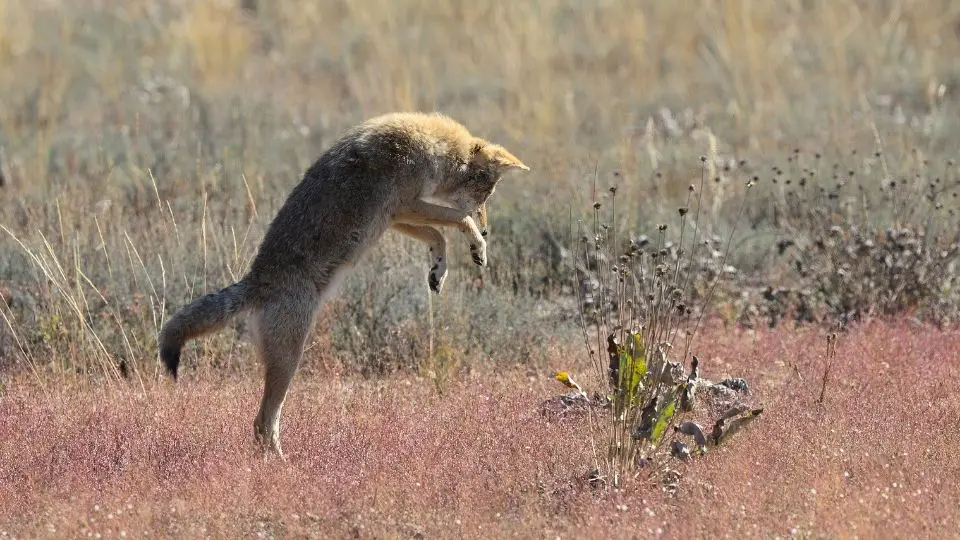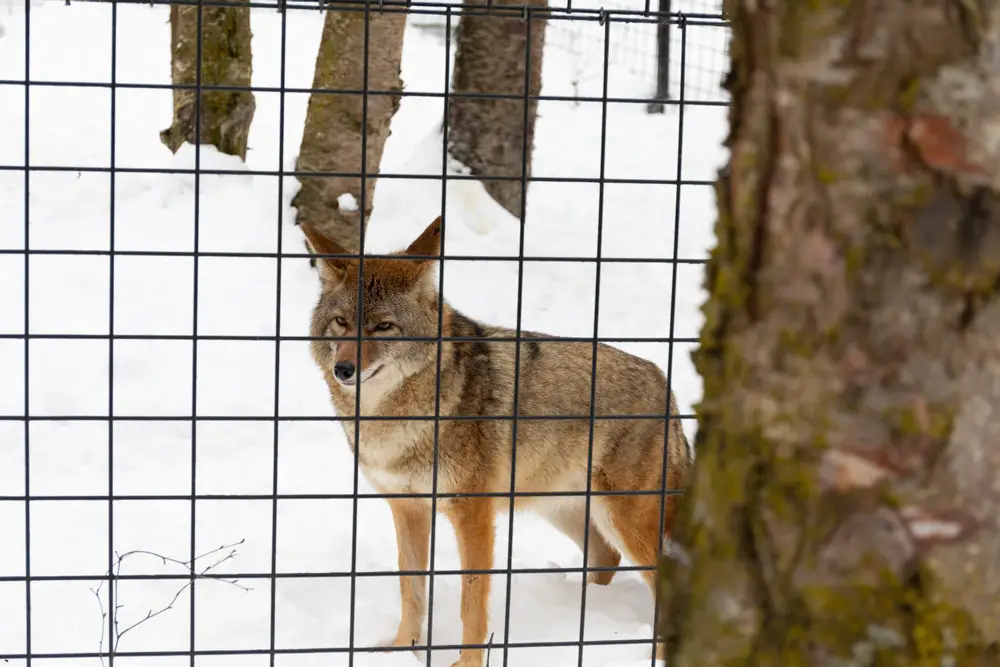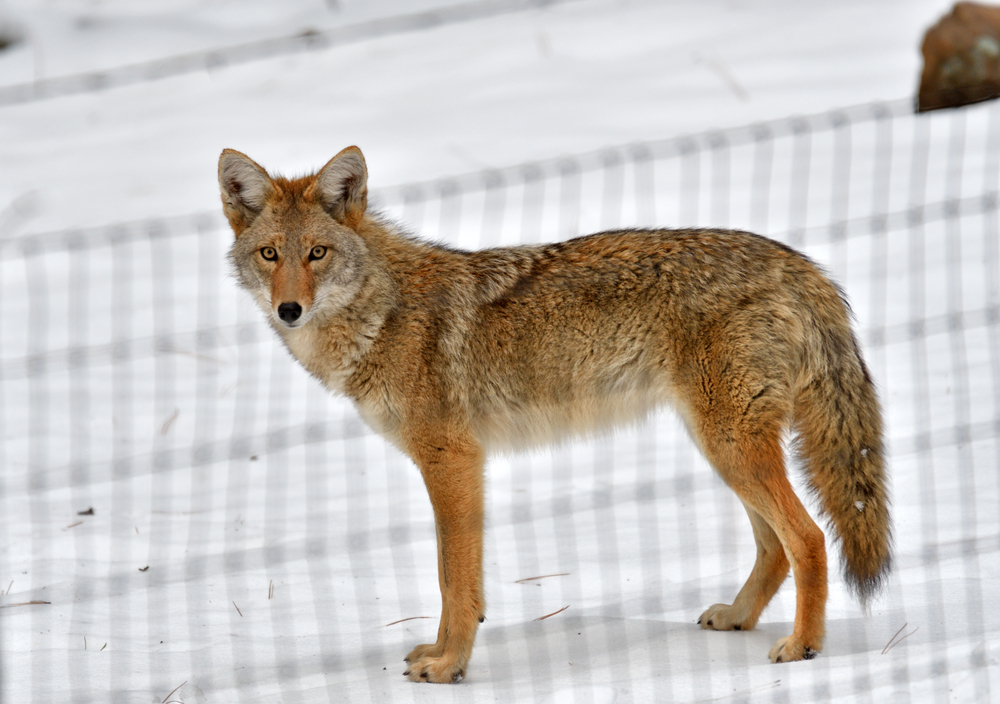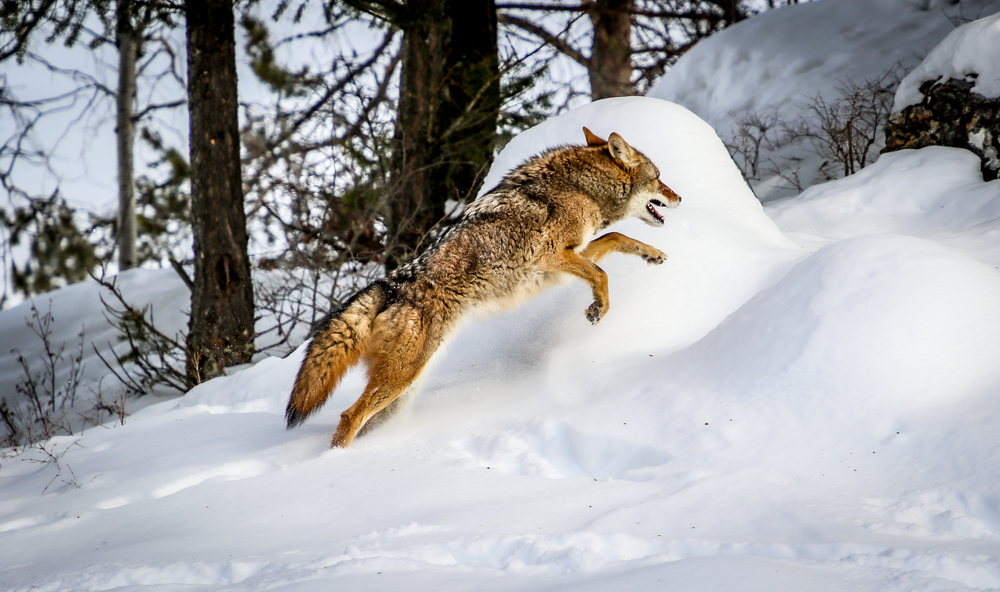Coyotes can jump about five feet high but hoist themselves up with their back paws to scale even larger walls and fences. Coyotes can scale a 14 feet tall wall or fence. A humane way to coyote-proof your fence is to install coyote rollers along the tops of fences.
Table of Contents
Can coyotes jump an 8-foot fence?
Yes, Coyotes can easily jump or scale an eight-foot fence. Coyotes use a combination of jumping and climbing to get over tall fences. They jump as high as possible and use anything they can as a foothold.
Coyotes place their front paws on top of the fence, and then pull themselves over it. They can also use corners or wedges on fences to boost themselves over the fence.
Depending on the type of fence, coyotes may climb up the entire fence without jumping it. Chain link fences are the easiest for coyotes to climb. Fences with grooves are also easily climbable. Coyotes can even squeeze through gaps in fences and get through fences with vertical bars.
Coyotes often prey on small animals. They enjoy stalking their prey and will leap and climb fences to get their food. For instance, if a rabbit squeezes through a fence to escape a hungry coyote, the coyote can jump or climb the fence to catch the rabbit.
Can a coyote jump a 6-foot wall?
Yes, coyotes can jump over a six-foot wall with ease. Coyotes can jump about five to six feet high.
They can reach this height without touching the wall or fence. However, they can scale a wall or fence about fourteen feet high.

How tall should a fence be to keep coyotes out?
To keep coyotes out, a fence should be at least six feet tall and eighteen inches below ground. Coyotes are not only excellent jumpers, but they are also excellent diggers.
Since coyotes can jump or scale this height, additions should be placed on the tops of fences to avoid a coyote getting over it successfully. One option is to use barbed wire to add an outward-facing extender along the top of the fence.
You can run an electrified line through the extender to make it even more coyote-proof. Coyote rollers are another option to add to your fence and are more humane than barbed wire.
Coyote rollers stop coyotes from hoisting themselves over your fence. These iron bars prevent coyotes and other wild animals from getting a grip on your fence to jump it.
How can I protect my dog from coyotes?
Coyotes pose a threat to domesticated dogs, especially smaller dogs. While coyote attacks on dogs are rare, they are possible. Below are ways to keep your dog safe from coyotes:
- Feed your dog inside.
- Don’t feed wild animals.
- Supervise your dog while outside.
- Keep your yard trimmed to eliminate coyote hiding spaces.
- Close pet doors at night.
- Keep your dog on a leash.
- Install coyote-proof fencing.
What times of day are coyotes most active?
Coyotes are mostly active at dusk and dawn. Coyotes are nocturnal but are sometimes active during the day. They may be seen while searching for new territory or food.
Coyotes can thrive in many different weather conditions. They could be seen or heard at any time during the year, including in winter.

What smells keep coyotes away?
Several smells can be used to keep coyotes away. The most effective smell to keep coyotes away is predator urine. Wolf urine is the best type because the coyote will smell its enemy and leave. Predator urine can be purchased and applied to yards.
White vinegar has a potent smell that keeps coyotes away. Vinegar is dangerous to plants, but it can be applied to the outside foundation of a home to emit its smell. You can also pour it into buckets or bowls and place them around your house as coyote repellent.
Capsaicin is a compound found in peppery foods that repel wild animals. You can spread cayenne pepper or pepper flakes directly onto areas where you suspect coyote activity.
Will lights keep coyotes away?
Bright lights keep coyotes away since they are nocturnal creatures that enjoy the darkness. Lights help make your yard less appealing to coyotes.
Motion censored lights will startle the coyote and scare it away. Floodlights can be used to light up the outside of your house to make coyotes feel vulnerable and scared.
Animal deterrent lights can be purchased and installed in your yard. These lights emit two red LED lights that make the coyote think it is looking into the eyes of a predator. This trick can scare away coyotes and other wild animals.
After some time, coyotes will realize the lights are not dangerous. Once this happens, the lights will no longer be an effective way of keeping coyotes away. The best solution is to use lights along with another strategy.

What attracts coyotes to your yard?
Coyotes are attracted to yards for food and shelter. They seek out food sources and will keep returning to places where they have found food before. Coyotes may feed on bird feeders, trash cans, gardens, and pet food.
If a yard has a chicken coop, a coyote will especially be attracted to it due to the chickens and the chicken eggs. Coyotes are attracted by the smell of dog poop because they enjoy hunting small dogs.
Yards with water sources such as fountains and filled watering cans will also attract them. Properties that contain overgrown vegetation or crawl spaces are appealing to coyotes because of the shelter they provide.
Coyotes have been known for finding shelter under decks and sheds. Tall grass is appealing to them because they can hide in it.

